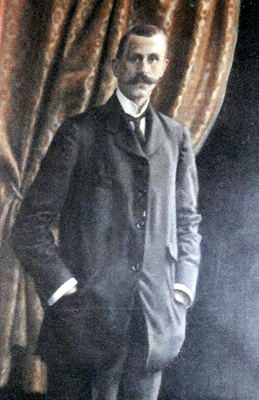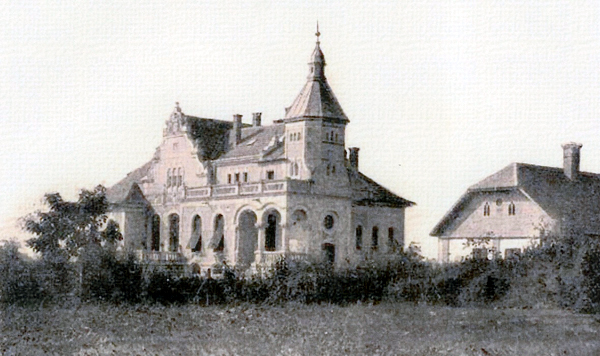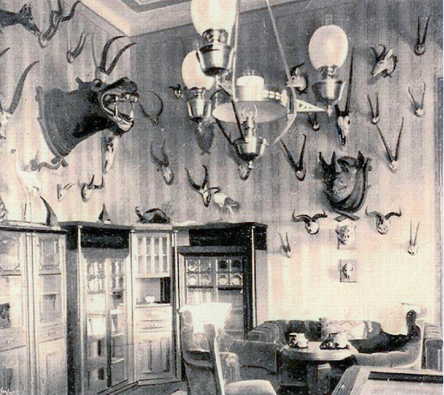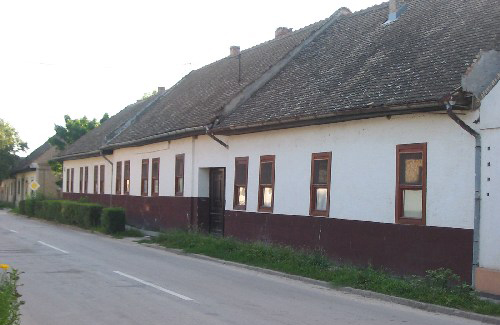|
The Fernbachs were a large
and influential family in the Batschka and in Apatin
whose origins can be traced to Marlen and Goldscheuer in
Baden-Wurttemberg.
The patriarch of the Batschka Fernbachs was Johann Georg
Fernbach born about 1733 in Marlen. He and his wife,
Magdalena Endt, had ten children seven of whom were born
in Apatin. They were the great-great-grandparents
of Balint (Valentin) Janos Fernbach born in 1871.
Valentin Fernbach was called the “Deichgraf” or “dike
count” because he drained swampland between Apatin and
Sonta. He created 10,000 Joch (one Joch is a little
less than half a Hectare) of farmland by building dikes
and pumps so that in case of flood the water could be
drained out of the farmland. In this way he created his
large fortune.
The Fernbachs owned a number of large schlosses or
palaces just some of which were in Temerin, Baba Puszta
(owned by Karl Fernbach) near Sombor in Aleksa Santic,
and Sonta. The Sonta schloss was planned by the famous
Apatin architect Franz Reichl for Valentin Fernbach.
Fernbach was an avid hunter who travelled to Africa
several times with two wealthy bachelor friends, Baron
Emil Talian from Kanjiza and Graf Oskar Vojnic from
Sabatka. Fernbach not only returned with many hunting
trophies, but living animals as well. He created one of
the first zoological gardens at his Sonta schloss. He
brought back ethnological material and had a huge
collection and great photos. His diary of his African
trips has been published.
Valentin fathered two children with his servant Maria
Johann, but this relationship was never accepted by the
family. In 1926 the dikes broke, the wild animals died,
the palace was severely damaged, but his collections
were partly saved and today are in the museum of Sabatka.
After World War I ten thousand Joch of his farmland were
expropriated and Valentin shot himself to death in
1926. After his death, the family sold his palace to
the rich squire Dungyerski who tore it down and built a
mill in Apatin with its material. That mill is still
working today. Valentin’s portrait now hangs in the
Sombor administration of the Donau-Theis channel. The
exact location of the palace can no longer be
determined.
Valentin is buried in the Fernbach chapel in Apatin,
where the first Fernbach settlers and all their
descendants are buried. His servant, Maria Johann, was
killed by a gypsy and her grave is beside the Fernbach
chapel. Their children were raised by Valentin’s
sister in Sombor. She was accidentally shot and killed
while standing by a window during the Hungarian invasion
in 1941.
The old town of Apatin was divided in two parts by
branches of the Danube River. The old Fernbach house
was situated on the banks of a branch of the river so
that boats almost landed there. It is behind this house
that the swamp once existed. A market will be built on
this old swampland. When Anton Fernbach left
Apatin in 1903 he gave this house to the community as a
home for the poor and it is still a home for the poor
and mentally disturbed. During the war of 1996
refugees of Croatia were housed here.
Chapel of the Noble Fernbach Family
from Apatin Renovated |
|

Balint Fernbach
von Apatin

Fernbach Schloss

Interior - Sonta
Schloss

Fernbach house in
Apatin
(Click images to enlarge)
|